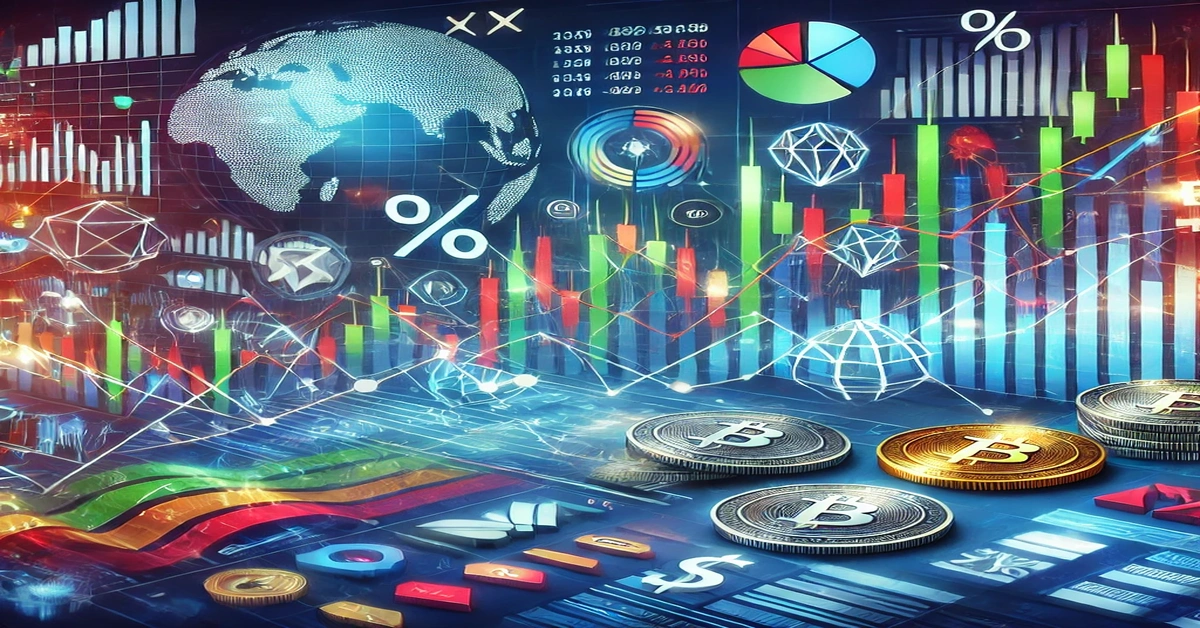Volatility presents both an opportunity and a challenge for traders. While it can potentially yield significant profits, it can also lead to substantial losses if not navigated correctly. The key to mastering volatile markets is understanding how different assets respond to uncertainty and knowing when to focus on each. Each asset class behaves differently during market swings, from cryptocurrencies to commodities, and recognizing these patterns is essential for crafting a resilient trading strategy.
In this article, Vivtatox, an innovative trading platform, examines the volatility profiles of various assets—cryptocurrencies, stocks, commodities, and more—and discusses when and how to leverage them depending on market conditions.
Volatility Defined: More Than Just Price Swings
Volatility measures how much and quickly asset prices move, often reflecting market uncertainty. It can be triggered by economic events, geopolitical tension, shifts in investor sentiment, or even technological changes. Highly volatile assets experience large price swings over short periods, while low-volatility assets remain relatively stable.
For traders, volatility presents opportunities to capitalise on rapid price changes but also increases risk. Navigating this requires understanding the source of volatility and selecting assets that align with one’s risk tolerance and strategy. Vivatox provides all necessary tools for traders and investors to monitor the market and capitalise on volatility.
The Role of Asset Classes in Volatile Markets
Each asset class has a unique volatility profile influenced by market dynamics, supply and demand, and investor behaviour. Here’s a closer look at how key asset types behave under uncertain conditions and when to trade them.
Cryptocurrencies: The High-Risk, High-Reward Asset
Cryptocurrencies are known for their extreme volatility. Assets like Bitcoin and Ethereum can experience double-digit percentage changes in a single day due to factors such as regulatory news, technological developments, or changes in investor sentiment. While this volatility can result in outsized gains, it also carries significant risks, making it essential to approach crypto trading cautiously.
Cryptocurrency tends to attract risk-seeking traders who are comfortable with rapid price movements in volatile markets. During periods of global economic uncertainty, cryptocurrencies often see increased volatility as investors look for alternatives to traditional financial assets. However, their unpredictable nature makes them ideal for short-term traders with tight risk management protocols.
Pro strategy: Use advanced charting and real-time data to time entries and exits effectively. Analysing patterns quickly is key to staying ahead in crypto markets.
Stocks: Stability with Selective Volatility
Stocks generally exhibit lower volatility than cryptocurrencies but can still experience significant price swings, particularly during earnings seasons, economic downturns, or geopolitical instability. While less volatile, blue-chip stocks may still see steady declines during bear markets, while tech stocks and growth equities often exhibit more erratic price movements.
In volatile markets: Defensive sectors like healthcare, utilities, and consumer staples tend to be less affected by market swings, making them more stable choices. On the other hand, growth sectors, particularly technology, can experience higher volatility as investors reassess valuations during economic stress.
Pro strategy: In volatile stock markets, focus on companies with strong fundamentals and healthy balance sheets. Experienced traders may use derivatives like options to hedge or profit from anticipated volatility.
Commodities: The Safe Haven Play
Commodities like Gold and silver often serve as safe havens during market uncertainty, with prices typically rising when investors seek shelter from volatile equity and crypto markets. Other commodities like oil are more vulnerable to supply and demand shocks and geopolitical tensions, leading to sharp price swings.
In volatile markets: Gold and silver tend to perform well during times of high inflation or market panic, making them reliable assets for those looking to reduce portfolio risk. Conversely, oil can become highly volatile, reacting swiftly to geopolitical events or changes in global demand.
Pro strategy: Focus on precious metals for long-term stability. For short-term gains, traders can exploit volatility in oil markets by watching geopolitical developments and inventory reports.
Indices: Broader Exposure with Moderated Risk
Trading indices—such as the S&P 500, NASDAQ, or Dow Jones—offer exposure to a broader market, which tends to smooth out individual stock volatility. However, indices can still experience large swings during periods of economic stress, political upheaval, or when central banks change monetary policy.
In volatile markets: While individual stocks might see dramatic moves, indices often reflect the overall health of an economy. This makes them less volatile than single stocks but vulnerable to macroeconomic events.
Pro strategy: Indices can be used for hedging or to gain broad market exposure without the risk of picking individual stocks. Traders can also capitalise on short-term volatility using futures or ETFs linked to these indices.
CFDs: Flexibility in Volatile Markets
CFDs allow traders to speculate on the price movement of various assets—whether stocks, indices, commodities, or cryptocurrencies—without owning the underlying asset. The leverage CFDs offer can amplify gains and increase risk, particularly in volatile markets.
In volatile markets: CFDs are particularly attractive for short-term traders who want to exploit rising and falling markets. However, the high leverage makes risk management crucial.
Pro strategy: Use stop-loss orders and proper margin management to control risk. CFDs provide flexibility to react quickly to market changes, but careful planning is essential to avoid significant losses.
Timing is Everything: When to Focus on Certain Assets
To succeed in volatile markets, it’s not just about choosing the right asset—timing plays a crucial role. Here’s a guide to understanding when to prioritise certain asset classes depending on market conditions:
In economic uncertainty, Gold and silver have become go-to assets as investors seek safety. At the same time, cryptocurrencies may experience heightened volatility, offering short-term opportunities for aggressive traders.
In rising inflation, Commodities like oil and agricultural products tend to perform well, as do sectors that can pass on costs to consumers, such as utilities or consumer staples.
- In risk-on environments: When markets are optimistic, stocks and riskier assets like cryptocurrencies gain favour. Traders may benefit from a focus on high-growth sectors or innovative tech stocks.
- Defensive stocks, indices, and commodities like Gold are buffers against steep losses during market corrections. Indices provide broad market exposure, while individual stock picking may be riskier during downturns.
How Vivatox Empowers Traders in Volatile Markets
Having access to the right tools and real-time insights is critical when trading in volatile markets. Vivatox is designed to support novice and experienced traders with cutting-edge technology and comprehensive asset coverage, ensuring you can confidently navigate any market environment.
For novice traders: Vivatox simplifies complex market movements, offering user-friendly tools that make it easier to monitor asset volatility, track performance, and understand trends. The platform’s wide range of assets—from cryptocurrencies to indices—lets beginners diversify their exposure and find the right asset mix based on their risk appetite.
For experienced traders: Vivatox’s advanced charting capabilities, real-time data, and custom indicators enable seasoned traders to stay ahead of market shifts. With access to multiple markets, you can seamlessly pivot between asset classes, taking advantage of volatility when it matters most. Vivatox’s risk management tools protect your capital even in unpredictable conditions.
Mastering volatility requires knowledge of market conditions and an understanding of how different assets perform in uncertain times. By selecting the right asset class for their strategy and utilising powerful tools like those offered by Vivatox, traders can navigate volatile markets with greater precision and confidence.
Whether you’re looking to capitalise on cryptocurrencies’ high-risk, high-reward potential or seek refuge in stable commodities, Vivatox equips you with the insights and technology to thrive in any market.







